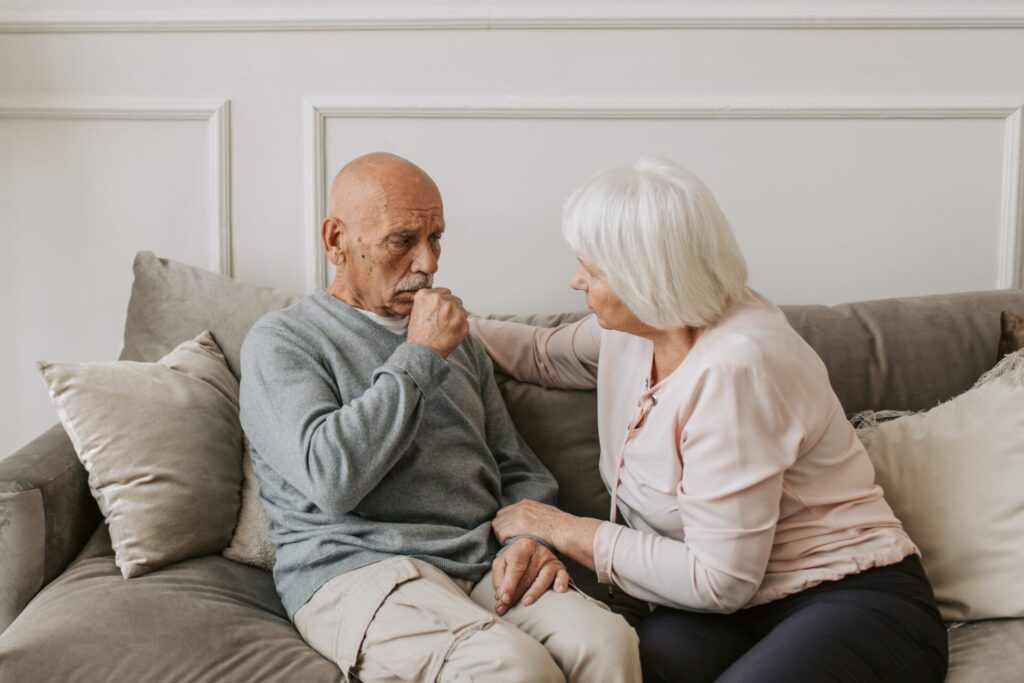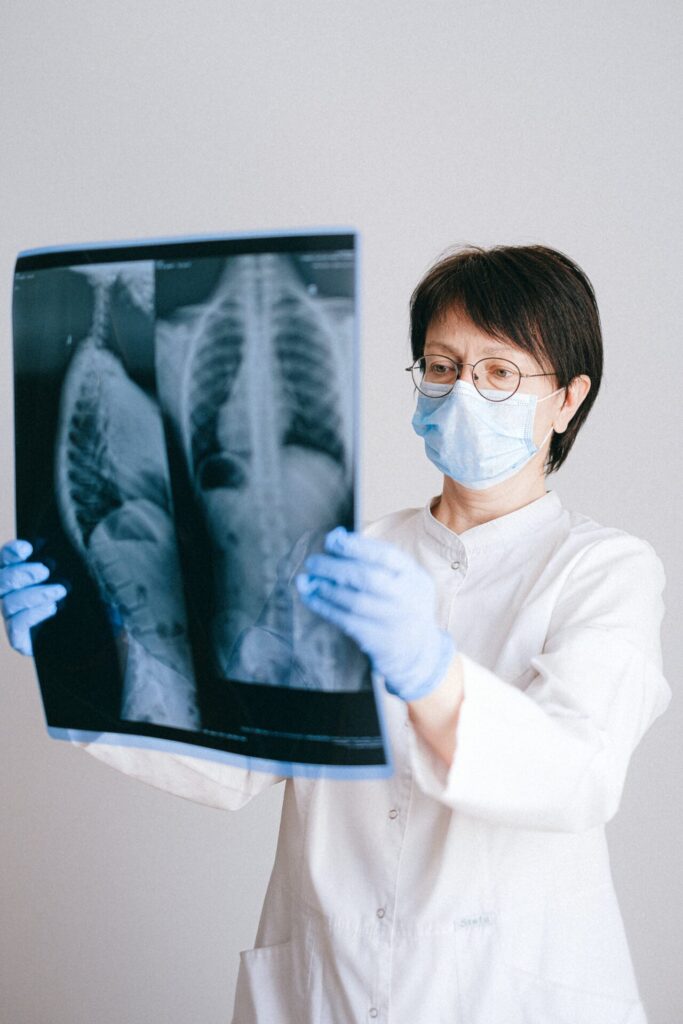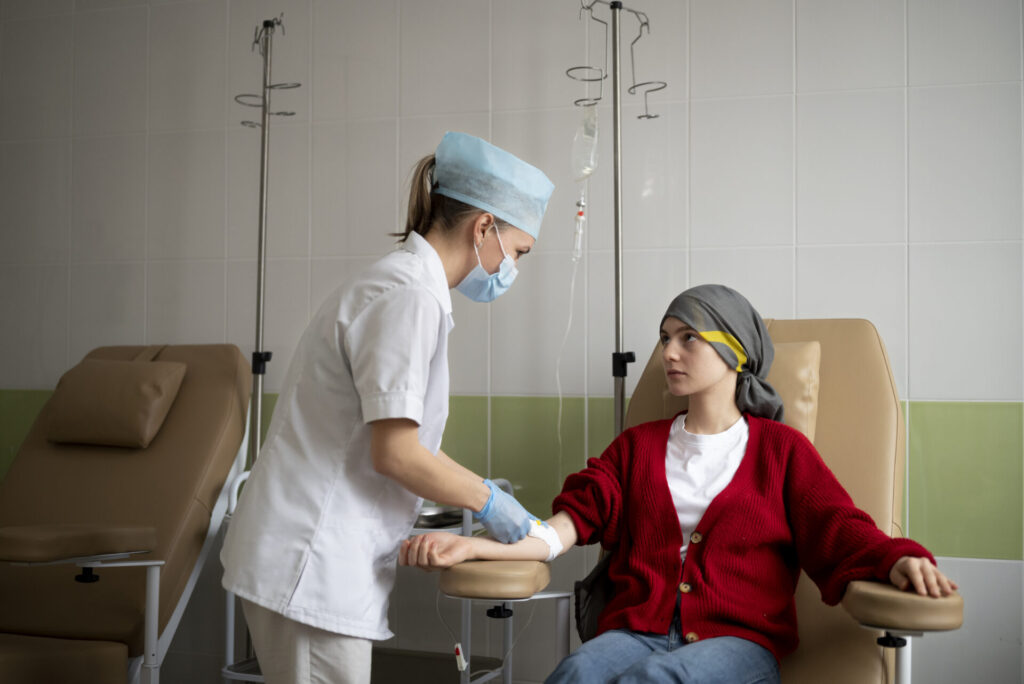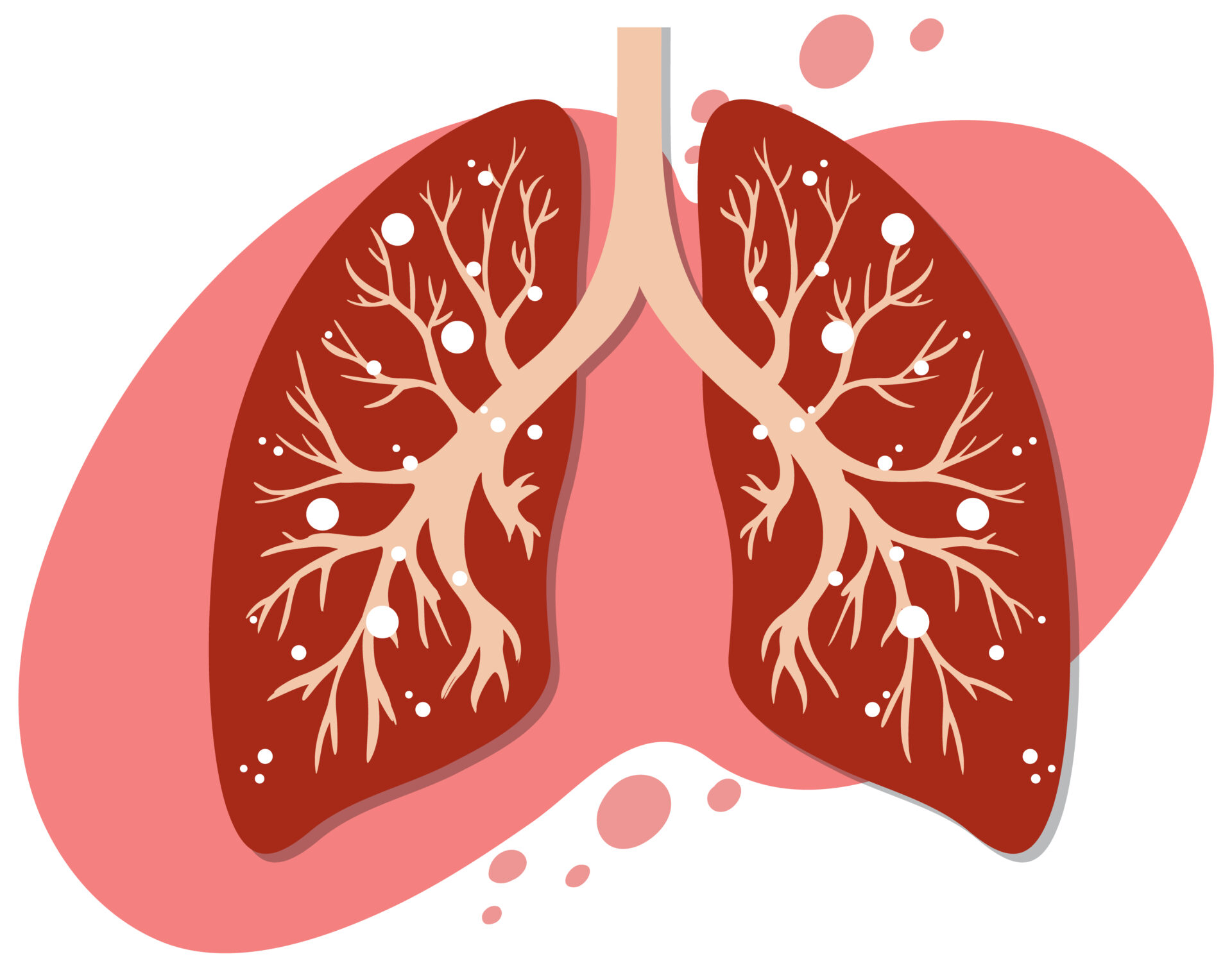Understanding Lung Cancer: Causes, Symptoms, Diagnosis, Treatment, and Prevention
Contents
- 1 Understanding Lung Cancer: Causes, Symptoms, Diagnosis, Treatment, and Prevention
- 1.1 Introduction
- 1.2 Causes of Lung Cancer:
- 1.3 Symptoms of Lung Cancer:
- 1.4 read more posts
- 1.5 Diagnosis of Lung Cancer:
- 1.6 Types of Lung Cancer:
- 1.7 read more posts
- 1.8 Treatment of Lung Cancer:
- 1.9 Prevention of Lung Cancer:
- 1.10 read more posts
- 1.11 Conclusion
- 1.12 read more posts
- 1.13 FAQs about Lung Cancer
- 1.14 read more posts
Read DISCLAIMER
Learn about the causes, signs, diagnosis, available treatments, and preventative measures for lung cancer. Find more about risk factors, kinds, and the effects of early identification on results.
Introduction

One of the most common and fatal types of cancer in the world today is lung cancer. It happens when cells in the lungs grow out of control, resulting in tumors that can affect lung function and, if uncontrolled, spread to other body areas. It is essential to comprehend the causes, symptoms, diagnosis, available treatments, and preventative measures related to lung cancer in order to raise awareness and ensure efficient management of this illness.
Causes of Lung Cancer:
Exposure to carcinogens—
substances that have the potential to cause cancer—is the main cause of lung cancer. Tobacco smoke, which includes smoke from cigarettes, cigars, and pipes, is the most frequent cause of lung cancer. Smoking exposes the lungs to a variety of toxic substances, including nicotine and tar, which can cause lung cell damage and even cause cancer to develop.
Still, smoking is not a direct cause of lung cancer in all cases. Additional risk factors include genetic propensity, air pollution, exposure to specific occupational hazards like arsenic, chromium, or nickel, secondhand smoking exposure, environmental risks including asbestos and radon, and genetic predisposition.
Symptoms of Lung Cancer:

Lung cancer symptoms might not manifest until the disease has advanced to later stages. Common symptoms include:
1. Persistent cough: This is a long-lasting or getting worse cough that may discharge sputum that is rust- or blood-colored.
2. Breathing issues: wheezing or shortness of breath.
3. Chest pain: Pain that is felt in the back, shoulder, or chest; it is frequently made worse by coughing or heavy breathing.
4. Hoarseness: Voice abnormalities or chronic hoarseness.
5. Unexplained weight loss: Weight loss that occurs suddenly and without cause.
6. Fatigue: An ongoing state of weakness or exhaustion.
7. Recurrent respiratory infections: Lung illnesses such as pneumonia or bronchitis that occur often.
read more posts
Diagnosis of Lung Cancer:

When lung cancer is suspected, several diagnostic tests may be conducted:
1. Imaging tests: abnormalities or tumors in the lungs can be found using X-rays, CT, PET, or MRI scans.
2. Biopsy: Taking a sample of tissue to examine under a microscope to see if it’s malignant.
3. Sputum cytology: the study of mucus expelled from the lungs in order to identify cancerous cells.
4. Bronchoscopy: A tiny, illuminated tube that is introduced into the lungs through the mouth or nose in order to see the airways and take samples.
Types of Lung Cancer:
There are two primary types of lung cancer:
1. Non-small cell lung cancer (NSCLC): Making up between 80 and 85 percent of instances of lung cancer, this is the most prevalent kind. Adenocarcinoma, Squamous Cell Carcinoma, and Large Cell Carcinoma are subtypes of Non-Small Cell Lung Cancer.
2. Small cell lung cancer (SCLC): Less prevalent than non-small cell lung cancer (NSCLC), SCLC has a tendency to develop and spread more quickly. It is closely linked to smoking.
read more posts
Treatment of Lung Cancer:

The kind and stage of the disease, general health, and personal preferences are some of the variables that determine the best course of action for lung cancer patients. Options for treatment might include:
1. Surgery: In cases of early-stage cancer, the tumor and any surrounding afflicted tissues are removed.
2. Chemotherapy: the use of medications to either eradicate or stop the development and spread of cancer cells.
3. Radiation therapy: destroying cancer cells with high-energy radiation.
4. Immunotherapy: inducing an immunological response against cancerous cells.
5. Targeted therapy: Medication that targets certain defects in cancer cells in an effort to halt the cell’s development.
Prevention of Lung Cancer:
Although it is not possible to prevent every instance of lung cancer, there are steps that can greatly lower the risk:
1. Don’t smoke: Give up smoking and keep your distance from secondhand smoke.
2. Radon testing: Check houses for excessive levels of radon gas and take action to lower exposure.
3. Steer clear of carcinogens: Reduce your exposure to environmental and occupational pollutants.
4. Healthy lifestyle: Eat a balanced diet, do regular exercise, and go to checkups on a regular basis to ensure early detection.
read more posts
Conclusion
The intricacy of lung cancer stems from its multifactorial origins, which extend beyond smoking. Although genetic predispositions and environmental exposures may play a part, tobacco use continues to be the primary cause. Lung cancer symptoms are mild and may show later in the disease’s progression, making early detection difficult. However, improvements in diagnosis and treatment—ranging from immunotherapies to targeted therapies—are changing the way that healthcare is provided.
Prevention is still essential; it emphasizes changing one’s lifestyle, limiting exposure to toxins, and supporting quitting smoking. Reducing the occurrence of lung cancer requires encouraging healthy lifestyle choices, frequent screenings, and public awareness. Research collaborations supported by community education provide hope for better results and better lives for individuals affected by this illness.
read more posts
FAQs about Lung Cancer
Early Warning Signs: Unveiling the Symptoms
1. How I Knew I Had Lung Cancer?
– Personal narratives and experiences can provide insights into the varied ways individuals first recognize the presence of lung cancer.
2. How is Lung Cancer Diagnosed?
– The diagnostic journey involves a combination of medical examinations, imaging studies, and, in some cases, a biopsy to confirm the presence of cancerous cells.
3. What Are Signs of Lung Cancer?
– Recognizing signs such as persistent cough, chest pain, or changes in breathing patterns is crucial for early detection.
4. What Are the Signs of Lung Cancer?
– Delving deeper into the diverse manifestations, including weight loss, fatigue, and respiratory issues.
5. What Does Lung Cancer Feel Like?
– Understanding the physical and emotional aspects of living with lung cancer, as described by those who have experienced it.
1. How Long Can You Live with Lung Cancer with Treatment?
– Exploring the impact of various treatment modalities on life expectancy and quality of life.
2. What Does Lung Cancer Breath Smell Like?
– A nuanced exploration of a less-discussed aspect of lung cancer symptoms and its olfactory implications.
3. What Are Symptoms of Lung Cancer?
– A detailed overview of the array of symptoms, emphasizing the importance of a holistic approach to treatment.
4. How to Know If You Have Lung Cancer?
– Understanding the diagnostic process and the steps individuals can take to seek medical evaluation.
5. How Do You Know If You Have Lung Cancer?
– Distinguishing between common respiratory issues and potential signs of lung cancer, emphasizing the need for professional consultation.
Prevention and Awareness: Key Strategies
1. What Are the First Signs of Lung Cancer?
– Encouraging awareness of early signs and symptoms to prompt timely medical attention.
2. What Color Ribbon Is for Lung Cancer?
– Delving into the symbolism of the lung cancer ribbon and its role in raising awareness.
3. How Do You Get Lung Cancer?
– Examining risk factors, including smoking, environmental exposures, and genetic predispositions.
4. How to Diagnose Lung Cancer?
– A detailed look at the diagnostic tools and procedures employed in identifying lung cancer.
5. What Color Is Lung Cancer Ribbon?
– Understanding the significance of the ribbon’s color and its role in advocacy and awareness campaigns.
Living with Lung Cancer: Quality of Life and Support
1. How Is Lung Cancer Treated?
– A comprehensive exploration of treatment options, including surgery, chemotherapy, radiation, and targeted therapies.
2. How to Treat Lung Cancer?
– Highlighting the importance of a multidisciplinary approach and personalized treatment plans.
3. How to Prevent Lung Cancer?
– Offering insights into lifestyle modifications, early detection strategies, and preventive measures.
4. How to Test Yourself for Lung Cancer?
– Discussing advancements in screening methods and the role of proactive health monitoring.
Beyond the Basics: Exploring Specifics
1. How Long Can You Live with Lung Cancer?
– Examining prognostic factors and the evolving landscape of lung cancer survival rates.
2. What Does Lung Cancer Look Like?
– Visualizing the radiological and pathological aspects of lung cancer through imaging and diagnostic methods.
3. What Does Back Pain from Lung Cancer Feel Like?
– Understanding the complexities of pain management and the unique challenges posed by back pain associated with lung cancer.
4. What Is Small Cell Lung Cancer?
– Distinguishing between small cell and non-small cell lung cancer and exploring treatment nuances.
5. What Percentage of Smokers Get Lung Cancer?
– Clarifying the correlation between smoking and lung cancer risk, and dispelling common misconceptions.
Other Questions
Q: Can non-smokers get lung cancer?
A: Yes, exposure to secondhand smoke, environmental pollutants like radon, asbestos, or genetic predisposition can lead to lung cancer in non-smokers.
Q: What are the main treatment options for lung cancer?
A: Treatment varies based on the type and stage but includes surgery, chemotherapy, radiation therapy, immunotherapy, and targeted therapy.
Q: How can I reduce my risk of lung cancer?
A: Avoid smoking, minimize exposure to carcinogens, test homes for radon, adopt a healthy lifestyle, and attend regular check-ups for early detection.
Q: What are the common symptoms of lung cancer?
A: Persistent cough, difficulty breathing, chest pain, unexplained weight loss, fatigue, hoarseness, and recurrent respiratory infections are common symptoms.

Very interesting points you have noted, thank you for posting.!
I don’t think the title of your article matches the content lol. Just kidding, mainly because I had some doubts after reading the article.
Thank you for your sharing. I am worried that I lack creative ideas. It is your article that makes me full of hope. Thank you. But, I have a question, can you help me?